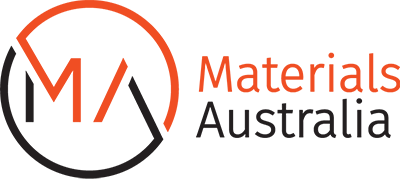ASM Fundamentals and Applications of Powder Metallurgy
Self-Study
Description
Authored by nationally recognized authority, F.V. Lenel, Professor Emeritus, RPI. Powder Metallurgy (P/M) has been a small but rapidly growing source of near-net shaped parts for industry. The success of the P/M process derives from its ability to mass-produce complex structural parts with savings in labor, material, and/or energy. In recent years, the development of new techniques and fabrication procedures has opened up new markets beyond the traditional ones of the automotive, farm, lawn and garden, and office equipment industries. Materials now routinely processed by P/M include aerospace superalloys, low-alloy steels, and tool steels; some of which are virtually impossible to process by any other means.
This course will help you prepare for the Powder Metallurgy Technologist Certification Exam.
Learning Objectives
Upon completion of this course, you should be able to:
- Describe the fundamentals of powder metallurgy
- Discuss the techniques and equipment used in production
Target Audience
This course is intended for both producers and users of powder metallurgy materials and parts. Metallurgists, technicians, engineers, quality control inspectors and operating personnel, as well as those in sales and marketing will benefit from taking this course.
Course Outline
- Overview of Powder Metallurgy Products and Processing -- metal powder production, applications, structural parts, porous bearings,
filter materials, cermets, magnetic materials, refractory and reactive metals, recent developments
- Physical Metallurgy Fundamentals -- chemical equilibrium, atomic order/disorder, equilibrium phase diagrams, mechanical properties,
strengthening methods, recrystallization, grain growth
- Powder Production -- atomization of liquid metals (gas, water, oil, soluble gas, rotating electrode, rotating disk), chemical
reaction methods, reduction, precipitation, electrolytic deposition, mechanical processing
- Powder Characterization I -- particle size and shape, particle size distribution, specific surface area, characterization
methods (sieving, microscopic examination, Stoke's Law, light obscuration/scattering, permeametry, etc.)
- Powder Characterization II -- sampling, chemical composition, apparent density and flow, tap density, compressibiltiy, green
strength, pyrophoricity, toxicity
- Compacting I -- mixing, lubrication, pressure application, density distribution, compacting tools, presses (mechanical, hydraulic,
rotary)
- Compacting II -- cold isostatic pressing, high energy rate and triaxial compaction, injection molding, extrusion of powder,
roll compacting, slip casting
- Applied and Fundamental Aspects of Sintering -- effects on geometry, microstructure, and mechanical properties, material transport,
diffusion
- Sintering Furnaces and Atmospheres -- continuous, batch, and vacuum furnaces, temperature control, types of atmosphere, reactions
- Liquid-Phase Sintering -- contact and dihedral angles, hot densification, cemented carbides, controlled porosity, super-solidus
sintering, infiltration, activated sintering
- Porous Materials -- interconnected and total porosity, pore shape, size, and size distribution, porosimetry, permeability,
self-lubricating bearings, filters, electrodes
- Structural Powder Metallurgy Parts -- design, tolerances, mechanical properties, steel, copper, stainless steel, aluminum
compositions, specifications
- Hot Consolidation of Metal Powders -- powder forging, hot isostatic pressing (HIP), the "CAP" process, Ceracon process, rapid
omnidirectional compaction (ROC), hot pressing, STAMP process, hot extrusion
- Rapidly-Solidified and Dispersion-Strengthened Alloys -- melt spinning, dispersion strengthening, mechanical alloying, P/M
aluminum alloys, ODS alloys, tool steels, copper
- Other Applications of Powder Metallurgy -- refractory metals, electric contact materials, switch materials, electrodes, friction materials, magnetic applications, metal-bonded diamond tool materials
Main Info
Cost:
Members: $1870Non Members: $1980
Location:
OnlineASM Fundamentals and Applications of Powder Metallurgy
Members: $1870
Non Members: $1980
